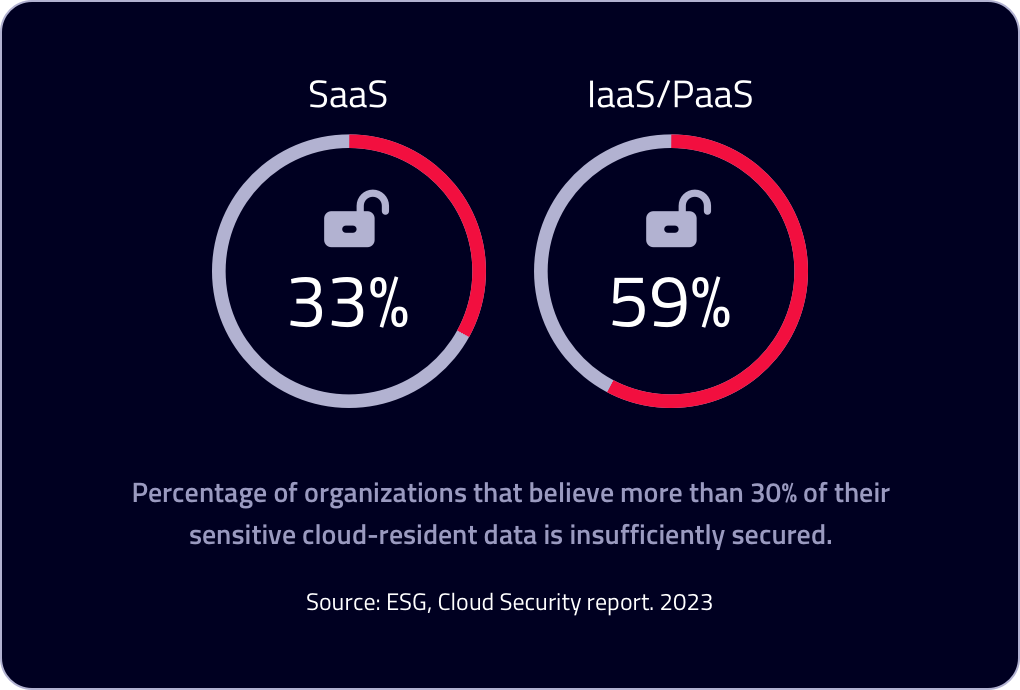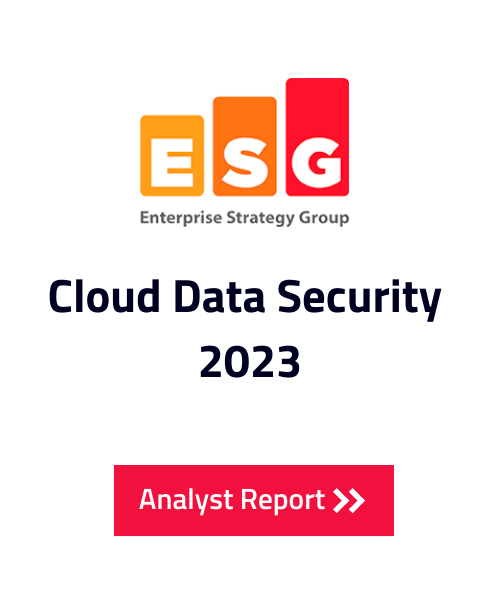DSPM: Why now?
Data Security Posture Management (DSPM) solves the pressing problem of securing critical data in hybrid multi-cloud environments.

Data is Exposed
To understand why DSPM’s moment is now, here are the top reasons for its adoption by modern data-focused organizations.
Legacy vs. Modern
Requirements
Modern environments place enormous value on data, but organizations have always valued their data – so what’s different now? Basically, it’s about how data is stored and used now versus in the past. A decade ago, data security was exclusively an on-premises affair.
From on-premises…
Computer centers, data storage, and users were onsite (although physical backups were manually moved offsite). The data store was a single, monolithic structured database, 3-tiered access was strictly controlled, and security was simpler to manage.
When organizations began using cloud computing, many simply replicated their on-premises environment into the cloud and continued using old techniques to keep an eye on cloud data security.
… to hybrid multi-cloud
Digital transformation with cloud technology has radically changed computing, storage, applications, locations, devices, and usage – virtually everything is different now versus the past.
Proliferation of data across the multi-cloud requires stricter data access governance, risk detection, and compliance controls than in a purely on-prem environment.
DSPM meets requirements for modern data security
There are many tools for data security, but the requirements mentioned for a modern hybrid multi-cloud environment make it impossible to definitively secure sensitive data with siloed, manual security functionality. Integration of all vital functionality in a single data security platform is necessary and, according to ESG’s study, preferred by two-thirds of survey respondents.
The role of DSPM is to provide an integrated security platform that gives an accurate picture of data security posture and allows your teams to:
Discover Data Stores |
|
| Find structured and unstructured sensitive data and users who can access it across all of your cloud environments. | |
Prioritize Risks |
|
| Discover paths to cloud data that weigh data sensitivity against identity, access governance, vulnerabilities, and configurations. |
Minimize Exposure |
|
| Classify sensitive data and map it to regulatory frameworks for identifying areas of exposure and how much data is exposed. |
Remediate Early |
|
| Connect with DevSecOps workflows to remediate risks earlier in the application development lifecycle. |
Normalyze: Agentless, End-to-End DSPM Scanning
Normalyze offers comprehensive data discovery and classification for your sensitive structured and unstructured data, both at rest and in motion. Improve your cloud data security with end-to-end visibility. Contact us today.



